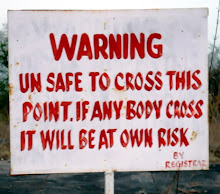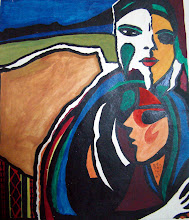India has managed to hold the ‘topmost’ position in many spheres, both positive and negative, when we compared to other countries of the world. This article briefly looks at the some of the social challenges for the Indian nation.
1. India from former times has a very different cultural set up in comparison to the western world. Not only does the society disagree in people of different classes living together but it also opposes to shaking of hands and even walking together on the same path. Female infanticide, dowry and sati were once a social problem, which is still practiced even today in some parts of India. One of India’s most eminent magazine the Outlook recent survey reveals evidences of the killing of the female child in the states of Haryana, U.P, Rajasthan, Bihar and Gujarat. The ratio between male and female child in many villages of Punjab is 10:5 and the abortion rate in India is around 10 million a year. This clearly shows the social condition of our times.
2. From the day of our independence, there has been continual bloodshed in India in the name of Gods. Conflicts between the two largest religious communities in India—Muslims and Hindus has not subsided even in the era of globalization. The situation is just like a volcano ready to erupt at any moment. Other religious minority groups are immensely suppressed at the same time. We also witness caste politics, ethnic conflicts, insurgencies and identity crisis in many parts of India.
3. India is constantly at feud with Pakistan and a time will come when it is impossible to settle things with words and we shall have to use the best weapons we have so far preserved.
4. In the current budget (2006-7) India increased 6% for education but this is still very little compared to other countries like Singapore which uses 18% and USA which uses 24% of its budget for educational purposes while the number of students in India would surely exceed the number of students in these two countries. Despite this, it is wonderful that we can still have people who succeed extraordinarily and are internationally recognized even though the country contributes a very nominal amount for their education. There is no doubt that countries like Singapore and USA which give such importance to education, by putting aside huge sums of money, would be more advanced and developed than countries like India. Out of the total population of the world, 17% reside in India. 350 million Indians are still illiterate.
5. In many parts of India, people are being fuelled by communal feelings and they strive only for their own benefits. Globalization took over capitalism; privatization is practiced more and more. The rich become richer but the poor in the slums are still neglected.
6. Cricket players and film stars are worshipped as Gods and since people are influenced by them entry into the political field comes with great ease for such celebrities. The most prominent politicians are usually former film stars but unlike other countries, these stars are not concern

ed about the welfare of the people as such. They earn both profit and fame. Soon, they build up hotels, restaurant and beauty parlors and compete among themselves to build the best only to fill their pockets. The people who give funds and charities to the poor are not usually our Indian celebrities but celebrities from abroad that are handling social work through whatever possible sources they have to help the poor. An Australian cricketer Steve Waugh opened a coaching centre in a slum area to help the poor people in the slums to learn cricket. Still the hearts of the Indian cricketers are not yet shaken even when he said that the truth of Indian cricket lies in the hand of the slum folks. A very famous writer Dominique Lapier gave a huge sum of charity to the poor people of Kolkota. He said that the money he earned from his book should reach the people he wrote about. People from other countries are concerned about our nation even before the people living in it have started to do so and this is an immense disgrace.
7. People are so full of fanaticism that some commit suicide just because they do not get tickets for Hindi movies or because the Indian cricket team lost a match. A well known star Amitabh Bachan donated jewelries worth 10 crores to a deity at the Tirupathi temple after finding out that he was not ailed by Cancer. Has he given at least this much of money for the poor? The valuables collected in temples could have been so much more useful to uplift the conditions of the poor. Unless our celebrities know how to care about the poor, they are just curses who steal money from people for their own benefits.
8. The major problem in India is politics. The Indian parliament members are filled with religious priests, criminals, sadhus, pundits, industrialists, former film stars etc and they sit together and brood over matters not more serious than the matters in a children’s play. Adult politicians fight in the house, securities are busy trying to take out MP’s who try to create trouble in the house. Our politicians are not more than the generation ‘X’ dudes as rough as they come. As long as the criminals occupy the best places/seats in the parliament, we shall face great difficulty in proceeding towards development. The differences in number of seats reserved in the parliament (LS) also affect the growth and development of states. Some states have about 40-80 seats reserved while others have only 1 seat.
9. The North East states are still downtrodden and the negligence of the central government has been regularly declared by scholars. Since, independence there is paradigm shift in Indian government’s policy toward the North East; Exotic cultural paradigm, security paradigm, join the mainstream paradigm and economic package paradigm and so on. Despite these efforts, why are problems still acute in India’s North East? How many more experiments do we need?
The things (I have) stated above are the unpleasant conditions of the Indian nation. Although, problems may still be acute, India has a potential if we consider these challenges and give more attention to them. At the same time, India is aiming to become a developed nation by the year of 2020. Some Indian thinkers believe that, if India take immediate steps to develop the country, it is still capable of improvement. After all, these problems could be wiped out only if all the citizens of India work together as one.
We the Mizos, being an Indian citizen and entirely depending on the central Government also have to try our best. The best way for Mizoram to become developed is to ‘contribute’ as much as possible to the Indian state. This is the only way to get into a good relationship with the central Government. We do not have much hope for but this relationship to be in full bloom. So, instead of making our land and our identity nameless, let us try our best to have a state of mutual understanding with the central government.
References:
1. The Week, March 19, 2006.
2. The Week, March 5, 2006.
3. Outlook, February 27, 2006.









